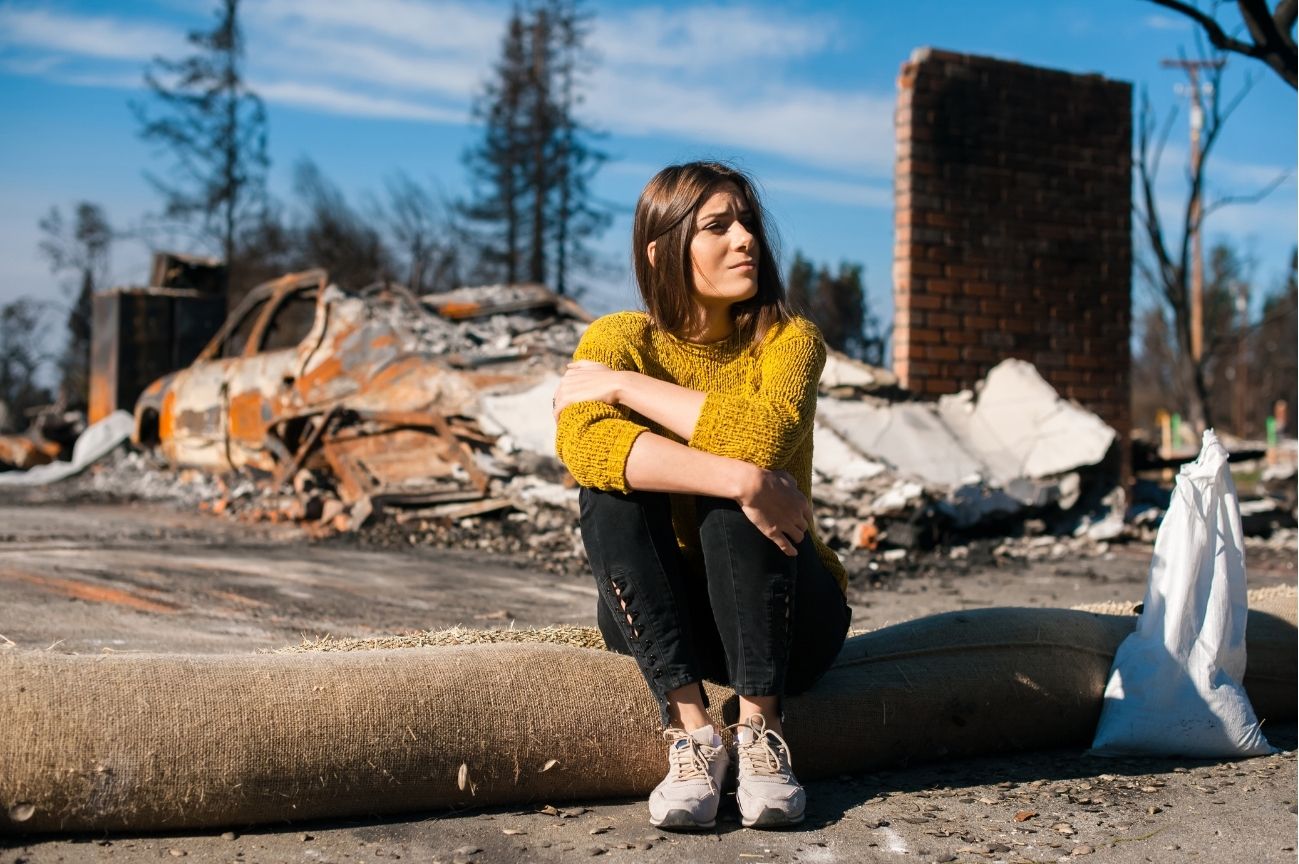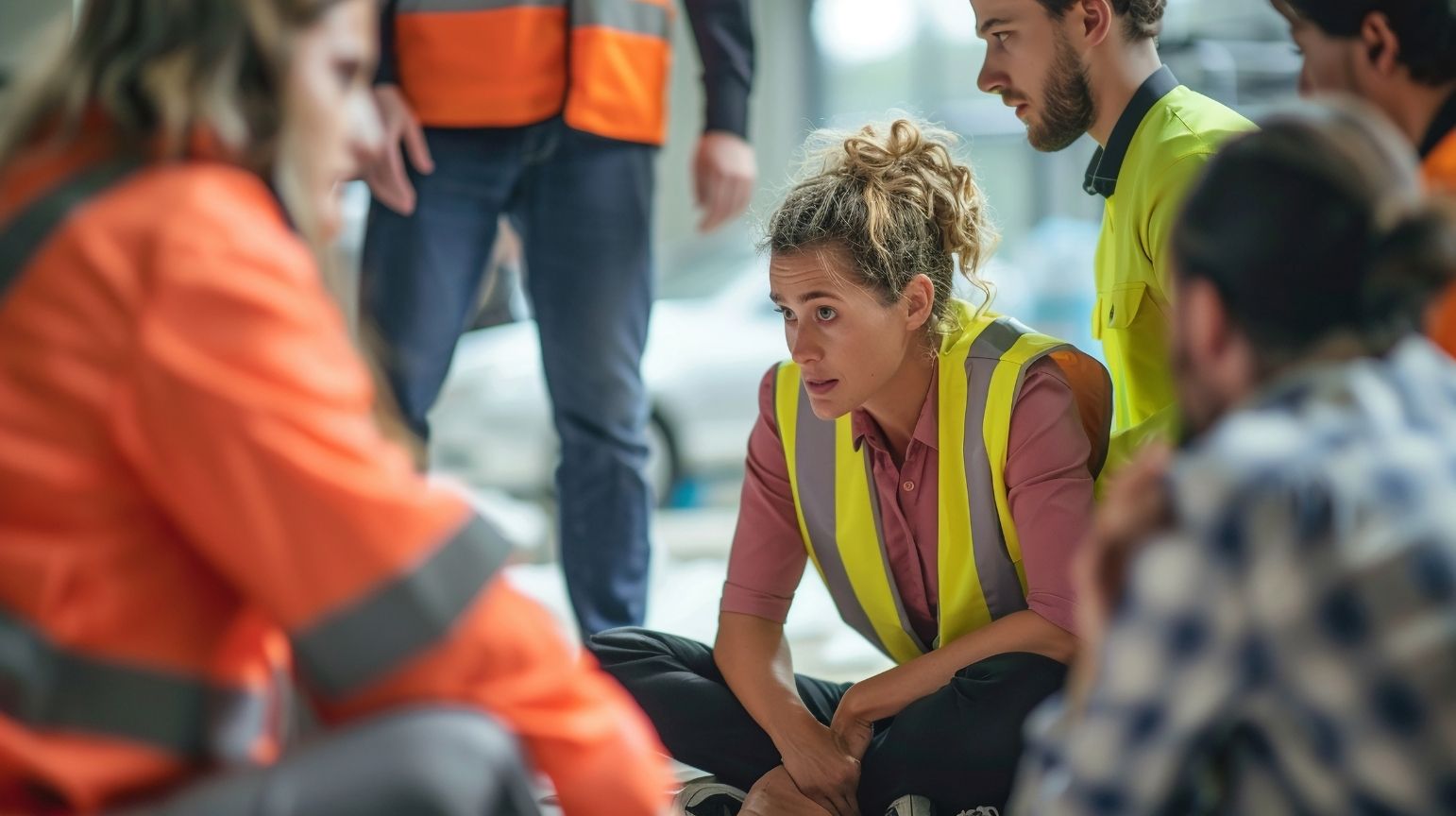Natural disasters can strike with little warning, and their impact can be devastating. Preparedness and a well-coordinated response are crucial in minimizing damage and saving lives. This article outlines seven key strategies for effective natural disaster response, aiming to equip communities, organizations, and individuals with the knowledge and tools necessary to handle such emergencies.
Introduction
Natural disasters encompass a range of catastrophic events, including hurricanes, earthquakes, floods, and wildfires. These occurrences can wreak havoc on communities, disrupting lives and inflicting severe damage on infrastructure. When disaster strikes, the consequences can ripple through local economies and social structures for years to come.
Importance of Effective Response Strategies
Effective response strategies become vital during these dire situations. They directly influence how quickly a community can recover and rebuild. A well-prepared response ensures that lives are saved and vital resources are efficiently managed.
The Consequences of Poor Planning
Without a clear plan in place, chaos can reign, leading to further complications and tragedies. The stakes are high; therefore, understanding these strategies is essential for individuals and organizations alike.
Building Resilience
By embracing a proactive mindset, communities can mitigate the adverse effects of natural disasters. Here’s why it matters:
- Saves Lives: Effective strategies can lead to timely evacuations and resource distribution.
- Reduces Economic Impact: Quick recovery minimizes long-term economic effects.
- Strengthens Community Bonds: Working together fosters unity and promotes healing.
Emerging Stronger
It’s about more than just weathering the storm—it’s about emerging stronger and more resilient on the other side.
In this article, we will delve into the seven key strategies that can significantly enhance natural disaster response efforts. Each strategy offers a unique perspective, equipping you with the skills and knowledge necessary to face the unexpected.
1. Planning and Preparedness
Effective disaster response starts with thorough planning and preparedness. When communities take the time to prepare, they significantly reduce the negative impacts of natural disasters. Here are key elements every disaster response plan should include.
Risk Assessment and Analysis
To create an effective plan, first understand your community’s unique risks. This includes identifying the types of disasters likely to occur and their potential impact.
Key Steps in Risk Assessment
- Analyze local geography and weather patterns.
- Review historical data on past disasters.
- Engage local stakeholders to gather diverse perspectives.
By understanding these risks, you can tailor your preparedness plan accordingly. This ensures it addresses specific vulnerabilities within the community.
Resource Identification and Allocation
Next, identify the resources your community will need in an emergency. Resources can include:
- Supplies
- Equipment
- Personnel
Steps for Resource Identification
- Develop an inventory of available resources such as shelters, medical facilities, and emergency responders.
- Actively seek out community assets, like local businesses and volunteers.
Resource Allocation
Make a plan for resource allocation. Determine how you will distribute supplies during a disaster, prioritizing those in greatest need.
- Equitable distribution ensures everyone has the support they need for effective recovery.
Developing the Emergency Preparedness Plan
After completing your risk assessment and resource identification, it’s time to develop your plan. Your preparedness plan should include:
- Clear guidelines for communication.
- Designated evacuation routes.
- Emergency contacts.
Ensure all stakeholders understand their roles during an emergency. Regularly review and update your plan based on new risks or resources.
Community Involvement
Encourage community involvement in the planning process:
- Hold workshops or meetings to raise awareness.
- Foster cooperation to build a community-centered plan.
Creating a sense of ownership empowers everyone and fosters a collaborative spirit.
Practice Makes Perfect
Finally, practicing your plan is essential for ensuring readiness. Conduct regular drills to familiarize everyone with roles and procedures.
Importance of Continuous Practice
- Encourage feedback to improve processes.
- Continuous practice solidifies everyone’s understanding and enhances overall community resilience.
In summary, planning and preparedness form the foundation of effective disaster response. By assessing risks, identifying resources, and involving the community, you pave the way for a more robust and resilient future.
2. Collaboration and Coordination
Natural disaster response thrives on teamwork. It requires the combined efforts of local, state, and federal agencies. Each level brings unique resources and expertise to the table, making efficient collaboration crucial for effective disaster management.
The Power of Partnership
Public-private partnerships are essential during disasters. They enable agencies to pool resources and share knowledge. For instance, private companies often provide logistical support or technological tools that enhance the response. In 2017, during Hurricane Harvey, many businesses joined forces with emergency services to deliver supplies and aid. This type of collaboration not only speeds up response time but also maximizes the reach of available support.
Examples of Effective Collaboration
Successful collaboration can make a tangible difference in disaster situations. Look at the response to the 2010 Haiti earthquake, where international organizations and local groups worked together to provide immediate aid. Coordination among various agencies ensured resources like food, shelter, and medical care reached those in need without unnecessary delays.
In wildfires across California, local fire departments frequently share resources and personnel. This collaboration teaches agencies how to manage the situation better, ensuring everyone is on the same page.
Building Stronger Networks
To facilitate effective collaboration, establishing strong networks before disasters hit is vital. Regular meetings and joint training sessions can build relationships that foster trust and efficiency. Utilizing technology platforms can aid communication between agencies, making collaboration smoother.
Additionally, engaging community organizations can amplify these efforts. Local nonprofits often have on-the-ground insights that government agencies might overlook. By tapping into this knowledge, agencies can tailor their responses to better fit the community’s needs.
By working together and pooling resources, communities can create a more resilient support system. This ensures a comprehensive, timely response during disasters while ultimately saving lives and minimizing damage.
3. Training and Drills
Training and drills play a vital role in disaster response. They ensure that first responders and community members know how to act swiftly and effectively during emergencies. Regular training can save lives and reduce chaos in high-stress situations.
The Importance of Regular Training
Implementing consistent training programs helps teams prepare for various scenarios. First responders must be equipped with essential skills, such as CPR and first aid. These skills are crucial for saving lives when every second counts.
In addition to responders, community members should also be educated on basic emergency procedures. This knowledge empowers them to assist others and contribute to the response effort.
Types of Training Programs
There are diverse training opportunities available, including:
- CPR and First Aid: Essential for medical emergencies.
- Shelter Management: Teaches how to organize shelters effectively during a disaster.
- Search and Rescue: Provides techniques for locating individuals in danger.
- Communication Training: Focuses on methods for relaying vital information quickly and clearly.
These programs help prepare participants to react appropriately in various disaster situations.
Conducting Effective Drills
Drills are an excellent way to put training into practice. Here are some tips to conduct effective drills:
Realistic Scenarios: Create scenarios that mirror potential disasters in your area. This practice helps participants understand what to expect.
Involve the Whole Community: Encourage community participation. A well-prepared community is better equipped to handle a disaster together.
Evaluate Performance: After each drill, assess what went well and what can be improved. This feedback loop fosters continuous improvement.
- Schedule Regular Drills: Make drills a routine part of emergency preparedness. Regular practice ensures skills remain sharp and teams stay coordinated.
4. Communication
Effective communication stands at the core of disaster response. When a natural disaster strikes, timely and clear information can save lives. Here’s how to ensure robust communication during these critical moments.
Establishing Clear Channels
First, responders must set up clear channels of communication. This includes establishing a command center to coordinate efforts. Use a central platform where all agencies can share updates and decisions in real-time. A unified command reduces confusion and enhances efficiency.
Utilizing Technology
Leverage technology to improve communication. Social media platforms, apps, and emergency alert systems can quickly disseminate information to the public. For instance, alerts about evacuations or safety protocols can reach thousands within seconds. Regular updates help keep community members informed and prepared.
Engaging with the Community
Involve the community in your communication strategy. Conduct outreach programs to educate residents about the expected response procedures. When people are informed, they feel more empowered and less anxious during a crisis. This fosters trust and cooperation between the public and emergency services.
Multilingual Communication
Addressing communication barriers is essential, especially in diverse communities. Providing information in multiple languages ensures everyone receives critical updates. Translators and multilingual materials can help reduce misunderstandings and encourage cooperation.
Feedback Mechanisms
Lastly, implement feedback mechanisms. This allows responders to gauge the effectiveness of their communication efforts. Surveys and community feedback can highlight areas needing improvement. Adjusting communication strategies based on this feedback can enhance future responses.
In summary, clear communication is vital during a natural disaster. By establishing reliable channels, engaging technology, involving the community, addressing language barriers, and seeking feedback, responders can improve outcomes for everyone involved.
5. Incident Response
Incident response is crucial in disaster management. It involves organized actions taken immediately after a disaster strikes. The main aims are to save lives and minimize damage. Effective incident response can drastically improve recovery outcomes for affected communities.
Establishing Command and Control
The first step is establishing clear command and control. This approach ensures that everyone knows who is responsible for what. A well-defined leadership structure streamlines communication and decision-making:
- Eliminates confusion: Clarity among first responders and involved agencies improves efficiency.
- Enhances coordination: Clear roles lead to better collaboration.
Prioritizing Resource Allocation
Next, prioritizing resource allocation is vital. After a disaster, resources like food, medical supplies, and rescue equipment may be limited. First responders must assess needs quickly:
- Focus on critical areas: Prioritize life-saving efforts in the most severely affected zones.
- Utilize available resources: Efficiently distribute what’s on hand for maximum impact.
Flexibility is key in effective incident response. Conditions can change rapidly following a disaster. Responders need to adapt plans based on real-time information. Continuous assessment allows teams to redirect resources effectively.
Implementing Standard Operating Procedures
Standard Operating Procedures (SOPs) guide responders during incidents. These procedures define:
- Roles and responsibilities: Ensures clarity in tasks during stressful situations.
- Sequence of actions: Provides a roadmap to follow.
Training on these SOPs is crucial. It ensures that everyone understands their tasks, fostering unity during chaotic situations.
Engaging the Community
Community involvement plays a key role in incident response. Local residents can provide invaluable insights and support. They often know their neighborhoods better than anyone else:
- Encourage participation: Involve community members in planning discussions and response drills.
- Build a culture of preparedness: This engagement benefits everyone and enhances resilience.
6. Recovery and Rehabilitation
Natural disasters leave communities devastated. Recovery is the phase where resilience shines. It’s about rebuilding lives and restoring normalcy. Effective recovery and rehabilitation strategies are essential to make this happen.
Engaging Affected Communities
Involving the community is crucial in recovery. Local input helps ensure that the recovery plan meets actual needs. Start by setting up community meetings. Gather feedback about what residents want in rebuilding efforts. Involving citizens fosters a sense of ownership. This boosts morale and strengthens community bonds.
Long-term Support Systems
Recovery doesn’t end with immediate relief. Long-term support is vital. This includes both physical and mental health services. It’s essential to address the psychological impact of disasters. Counseling and community support groups can aid emotional recovery. Offering job training programs can also help individuals regain financial stability.
Infrastructure Rehabilitation
Rebuilding physical infrastructure is another key component. Roads, bridges, and utilities often take significant time and resources to restore. Prioritize areas that affect daily life, such as schools and hospitals. Use resilient materials to prepare for future disasters. This proactive approach minimizes disruption and enhances safety.
Financial Assistance and Resources
Financial aid is often necessary during recovery. Governments and NGOs should provide grants, low-interest loans, and other resources. These funds enable families and businesses to recover quicker. Ensure that information about available services reaches all affected individuals, especially marginalized communities.
Monitoring Progress and Adapting
Lastly, monitor recovery progress regularly. Create benchmarks and timelines to assess rebuilding efforts. Encourage flexible planning, allowing for adjustments based on community needs. Recovery should be an evolving process. By staying adaptable, communities can respond effectively to emerging challenges.
In summary, recovery and rehabilitation require a comprehensive approach. Engaging communities, providing long-term support, and focusing on infrastructure and finances are vital. Together, these strategies can lead to a stronger, more resilient community post-disaster. The road to recovery may be long, but it’s achievable with proper planning and collaboration.
7. Continuous Improvement in Disaster Response
Effective disaster response doesn’t end when the immediate threat goes away. Instead, it requires ongoing assessment and refinement. Continuous improvement ensures that future responses are more effective and efficient.
Lessons Learned from Past Events
After any disaster, evaluating what worked and what didn’t is crucial. This evaluation is usually documented in after-action reports, which detail strengths and weaknesses. These reports provide valuable insights for future planning.
- Prioritize Analysis: Make it a priority to analyze these insights with your team.
- Focus on Strengths: Identify successful strategies to replicate in the future.
- Recognize Weaknesses: Acknowledge areas needing improvement to enhance response efforts.
Incorporating Feedback Mechanisms
Engagement doesn’t stop after the disaster. It’s essential to solicit feedback from:
- First responders,
- Community members, and
- Local organizations.
This inclusive approach highlights various perspectives and offers suggestions for improvement. Use methods such as:
- Surveys,
- Community meetings, or
- Workshops
Gather input on all aspects of the response.
Developing Action Plans
Once you gather data, it’s time to create action plans to address identified gaps.
- Modify Existing Strategies: Make necessary adjustments to current protocols.
- Assign Responsibilities: Clearly assign specific roles and timelines to ensure accountability.
Training for Improvement
Utilize the feedback and lessons learned to enhance training programs.
- Adjust Drills: Incorporate new strategies into your exercises.
- Regular Updates: Ensure everyone is informed about the latest practices and protocols.
Building a Culture of Improvement
Encourage a culture that values ongoing education and adaptation. This culture promotes:
- Innovation: Foster an environment where new ideas are welcomed.
- Accountability: Ensure that team members understand the importance of their roles.
When responders know they can suggest changes, they feel more invested in the process.
Conclusion
Natural disasters can be chaotic and overwhelming. However, implementing the seven key strategies mentioned above can significantly improve our response efforts. Each strategy—planning, collaboration, training, communication, incident response, recovery, and continuous improvement—plays a vital role in enhancing disaster readiness.
Communities that are proactive in their planning not only protect lives but also reduce long-term damage. Collaboration between local, state, and federal groups strengthens the response framework. Regular training ensures that responders are ready when disaster strikes, while clear communication keeps everyone informed and reduces panic.
Moreover, effective incident response prioritizes resource allocation and establishes command protocols. After a disaster, recovery is not just about repairing infrastructure; it’s about engaging affected communities in the rebuilding process, making sure their voices are heard.
Finally, the cycle of continuous improvement means learning from each experience. Documenting successes and struggles through after-action reports helps communities prepare better for future incidents.
Now is the time to take action. Whether you’re part of a community organization or an individual, you can advocate for these strategies to improve local disaster response efforts. Your engagement can make a difference. Stay vigilant, plan ahead, and prioritize cooperation. Together, we can create a resilient future against natural disasters.







